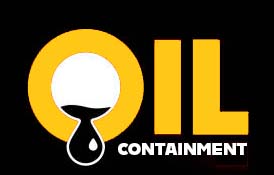In the oil industry, creating effective containment barriers is crucial for preventing leaks and spills that can have disastrous environmental and financial consequences. Secondary containment researchers play a key role in developing and implementing these barriers to protect both workers and the environment. One commonly used material for containment barriers is polyurea, a versatile and durable substance that can provide excellent protection against leaks and spills. In this article, we will discuss how to properly create containment barriers in the oil industry using polyurea.
Understanding the Importance of Containment Barriers
Containment barriers are essential in the oil industry for preventing leaks and spills from contaminating the surrounding environment. These barriers act as a secondary line of defense, containing any leaks or spills that occur and preventing them from spreading further. Properly designed containment barriers can help to minimize the impact of accidents and protect both the environment and workers in the oil industry.
Choosing the Right Material
When it comes to creating containment barriers in the oil industry, choosing the right material is crucial. Polyurea is a popular choice for containment barriers due to its versatility and durability. Polyurea is a synthetic material that forms a flexible and seamless membrane when applied, making it ideal for creating watertight containment barriers. Additionally, polyurea is resistant to chemicals, abrasion, and UV exposure, making it a reliable choice for use in the oil industry.
Properly Designing Containment Barriers
When designing containment barriers in the oil industry, it is important to consider factors such as the size and layout of the containment area, as well as the type of material being stored. Containment barriers should be designed to effectively contain any leaks or spills that occur, preventing them from spreading and causing further damage. Properly designing containment barriers can help to minimize the risk of accidents and protect the environment from contamination.
Applying Polyurea
Once the containment barriers have been properly designed, it is time to apply the polyurea. Polyurea is typically applied using a spray system, which ensures a seamless and uniform coating. The polyurea is sprayed onto the surface of the containment area, forming a durable and flexible membrane that can withstand a wide range of environmental conditions. Once the polyurea has been applied, it should be allowed to cure properly before being put into use.
Maintaining Containment Barriers
After the containment barriers have been installed, it is important to properly maintain them to ensure their effectiveness. Regular inspections should be conducted to check for any signs of damage or wear, and any necessary repairs should be made promptly. Additionally, it is important to monitor the containment barriers regularly to ensure that they are functioning as intended and are able to contain any leaks or spills that occur.
In conclusion, creating effective containment barriers in the oil industry is essential for preventing leaks and spills that can have serious consequences. By choosing the right material, properly designing the barriers, and applying polyurea, secondary containment researchers can help to minimize the risks associated with accidents in the oil industry. With proper maintenance and monitoring, containment barriers can provide reliable protection against leaks and spills, safeguarding both the environment and workers in the oil industry.
By following these guidelines and utilizing polyurea as a key material, secondary containment researchers can create containment barriers that are effective, durable, and environmentally friendly.
